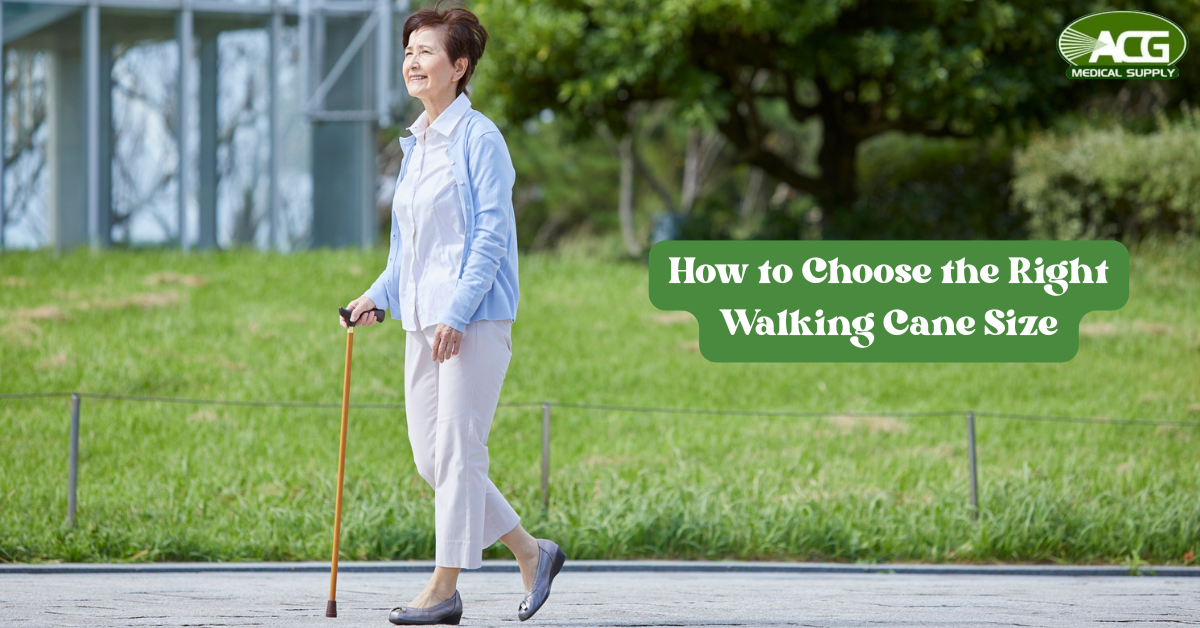Half of all cane users are doing it wrong. They’re hunched over, shoulders elevated, or leaning awkwardly—turning what should be a stability tool into a source of chronic pain. The culprit? A cane that’s two inches too long or three inches too short. When it comes to choosing a walking cane, most people eyeball it, they grab something that looks reasonable, and wonder why their neck hurts after a week.
The problem isn’t that sizing information doesn’t exist—it’s that the stakes are rarely explained. A cane that’s off by just a little can throw your posture out of whack, strain your shoulders and spine, and ironically make slipping or falling more likely. Understanding why the right measurements are so important turns picking a cane from a shot in the dark into an intentional decision.
The Physics of Support Most People Ignore
When someone places weight on a cane, load transfers through the arm, into the shaft, and finally to the ground. This redistribution matters enormously.
Too long? Your shoulder hikes up without you even noticing. That awkward angle means you can’t transfer weight properly, so your neck and upper back start to ache. The cane ends up pointing out instead of straight down, making you feel wobbly instead of supported.
Too short’s just as bad. Now you’re hunched forward, jamming extra pressure into your lower back, knee, and hip—especially on the side that’s already weak. Your elbow locks straight. Every step feels stiff, jarring, like you’re walking on a peg leg. What should help your stride actually messes it up.
A good cane? Feels like your arm just got longer. Natural. Easy. That’s what we’re after.
The Wrist Crease Method Nobody Uses Correctly
Here’s where most walking cane sizing guides stop short: they mention the wrist crease method but never explain why self-measurement fails. When someone tries to measure themselves, they twist the torso, shift weight, and elevate the shoulder—destroying posture in the process. The measurement ends up two inches off, and six months later, you’re in physical therapy for “unexplained” shoulder pain.
Here’s how to actually do it:
- Throw on your regular walking shoes (heels throw everything off, so no slippers or bare feet)
- Stand naturally, arms hanging loose, slight bend in the elbow—like you’re waiting for the bus
- Have someone else measure from the floor to that wrist crease where your hand meets your forearm
- Got 33.2 inches? Round up to 33.5
That half-inch matters more than you’d think for getting a proper walking cane fit for comfort and balance.
But what if no one’s around? No worries! You can use the height-division method. Just take your height in inches, divide it by two, and then add half an inch. So, if you’re 5’8″ (68 inches), you’d need a cane that’s about 34.5 inches. It’s pretty close, but not always perfect, especially if you have shorter arms or posture issues.
Adjustable vs Fixed Walking Cane: Which One’s Right?
Adjustable aluminum canes are forgiving. Made a measurement mistake? Just twist the collar, tweak the height, you’re good. This one is actually really perfect when you’re still figuring things out or recovering from surgery or injury.
Wooden canes look great—classic, solid, stylish. But once you cut them, they’re done. No going back. Measure twice (actually, have someone else measure twice).
Carbon fiber? Lightweight, often adjustable, feels premium. Nice middle ground.
Quad Canes (sometimes called Quad Walking Canes) have four legs on the base instead of one. Way more stable. Heavier, sure, and a bit clunky on stairs, but if balance is shaky? Total game-changer. Most come adjustable, which is clutch for post-surgery when things keep changing.
ACG Medical Supply offers a wide range of walking canes in various materials to ensure you find the perfect fit for your needs.
The Rubber Tip Test Almost Everyone Skips
Before purchasing, flip the cane upside down and shake it. If the rubber tip falls off, put it back on the shelf. That tip creates friction and prevents slipping—it’s the only component touching the ground. A loose, low-quality tip transforms a $60 cane into a liability. Replacement tips cost three dollars and should be checked monthly for wear.
Walking Cane Height Chart
| Cane Height | What You’ll Notice | Why It’s a Problem | What to Do |
| Too Short | You’re stooping, leaning forward | Back/knee pain, wobbly steps | Go a size longer |
| Too Tall | Shoulder hikes up, arm feels awkward | Neck/shoulder tension | Try a shorter cane |
| Just Right | Elbow bent 15–20°, arm relaxed | Smooth, stable walk | You nailed it—stick with it |
Conclusion
Ignore the static about “universal” sizes or perfect charts. Your comfort and stability beat rules and formulas every time. Measure well, test how you walk, tweak if something feels off, and swap out tired parts. A cane should help you move better, not create new aches to solve.
FAQs
Q: What if my cane feels off even when I measured carefully?
A: Take a short walk. If you’re scrunching any body part, recheck the measurement or try a handle with a different angle—your body’s feedback is your best guide.
Q: Are those four-legged (quad) canes really tougher to use?
A: They’re heavier and sometimes clunky on stairs, but they’re a lifesaver for balance issues. Lots of folks alternate between standard and quad canes depending on what they’re doing that day.
Q: How do I know if my cane’s too long in real life?
A: If your shoulder hikes up every time you lean on it, or your elbow’s locked straight, it’s too tall.
Q: Do adjustable canes get loose over time?
A: Some do. Check the locking mechanism regularly. If it wobbles, tighten it up.
Q: Can I switch out the tip or grip?
A: Absolutely. Just make sure the replacement tip or grip doesn’t raise the height. Comfort and safety come first.

